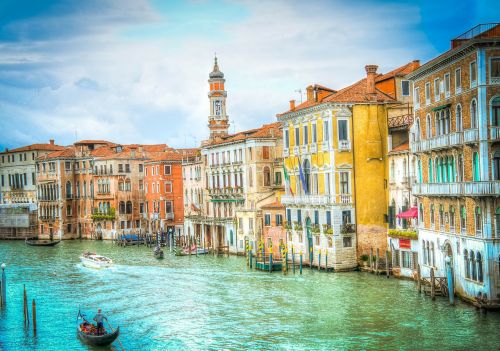The rich cultural heritage of Venice, a city renowned for its historic buildings and priceless artworks, has faced significant threats in recent decades. Rising sea levels, pollution, and the natural ageing of monuments have endangered the city's artistic and architectural legacy.
In response, UNESCO has spearheaded numerous restoration and preservation projects in partnership with Italian authorities and private committees over the past 50 years. Now, the organisation has taken one more step to safeguard the knowledge collected during these initiatives by creating an online inventory of the programme files on restoration and preservation projects of Venetian monuments and works of art.
The online archive, accessible through UNESCO's Access to Memory (AtoM) database, provides detailed descriptions of over 40 years of work, including surveys, studies, photographic campaigns, and documentation of the restoration interventions financed or co-financed by the Private Committees.
“This inventory not only preserves but also enriches our collective memory and the broader memory of the organisation,” said in a statement Magdalena Landry, Director of the UNESCO Regional Bureau for Science and Culture in Europe.
The publication of this archival description will enable researchers and conservationists to plan their work before visiting the physical archives in Venice. Remote access also reduces the need for immediate travel, streamlining research efforts, and promoting local and international collaboration.
“Through the dedicated work of UNESCO, the silent stories of Venice's past are now heard through the preservation of its archives for future generations,” said Adama Pam, Chief Archivist at UNESCO.

The Venice Digital Time Machine
The next step is digitising the UNESCO Archives in Venice, making them available online with recent technologies. UNESCO is currently seeking partners and funders to undertake this important initiative, further enhancing the accessibility and preservation of this invaluable cultural heritage.
The Venice Time Machine project aims to digitise and preserve over a millennium of cultural heritage from Venice's State Archives, using advanced data processing and visualisation techniques to create an open digital archive and virtual tool for navigating Venetian history.
The project was launched a year ago and has already made significant progress, with a team of over 100 researchers and students working to develop the necessary infrastructure, organise the vast archival materials, and define workflows for mass digitisation.
While an exact percentage of completion is not provided, the latest news is that the Lombard Odier Foundation is joining as a funding partner to help take the project to the next level in digitising and exploiting this enormous trove of historical documents spanning over 1,000 years.
The State Archives of Venice contain a vast amount of handwritten documentation in languages that have evolved from the Middle Ages to the 20th century.
An estimated 80 kilometres of shelves are filled with administrative documents, from birth registrations, death certificates, and tax returns to maps and town plans. These documents are often very delicate and sometimes in a fragile state of preservation.
The diversity, quantity, and accuracy of Venetian administrative documents are unique in Western history.
--
Image: Mariamichelle, CC0 1.0 Public Domain
Image 2: Courtesy of UNESCO









